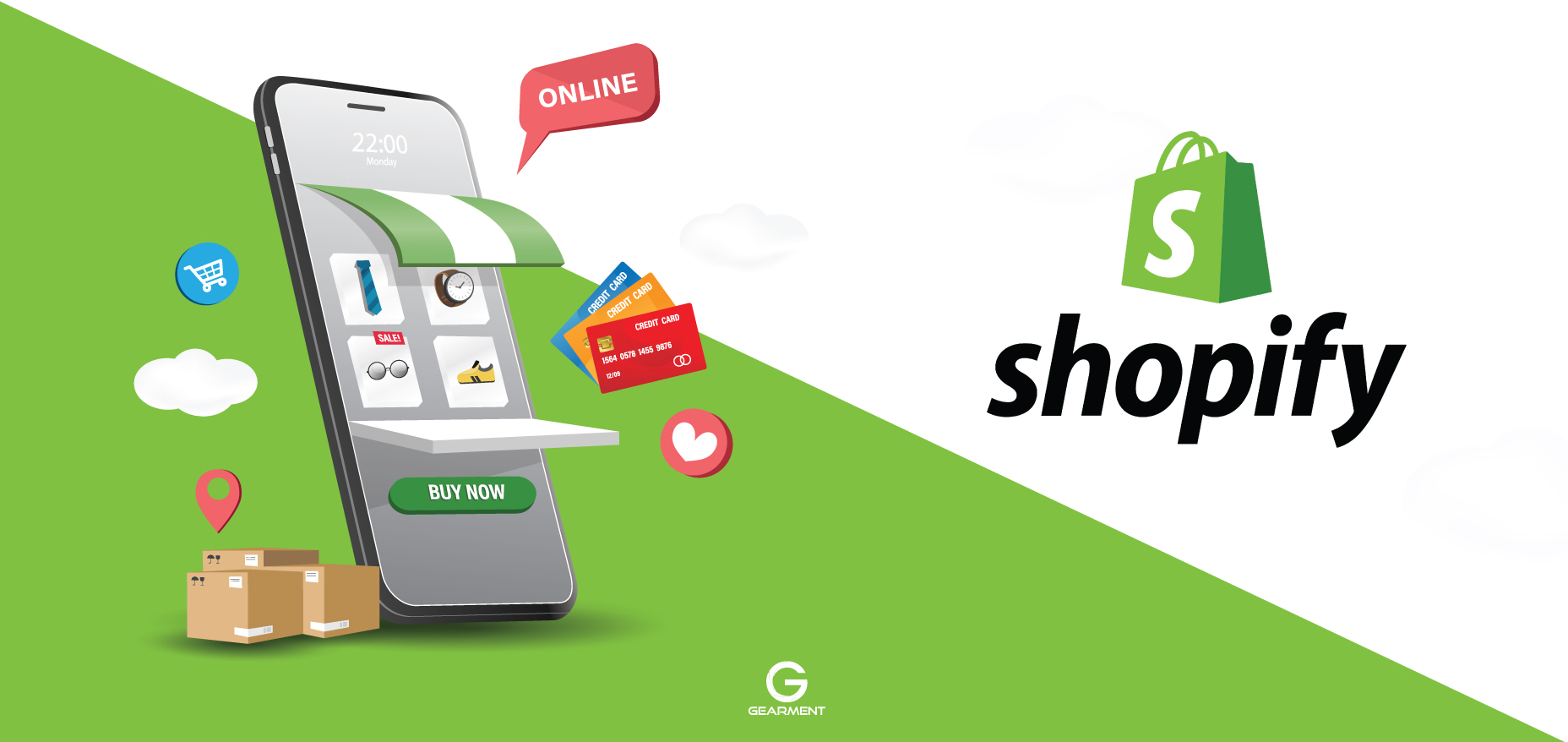Introduction:
In today’s digital era, establishing an online presence is imperative for businesses to thrive. With the exponential growth of e-commerce, having a robust platform to showcase and sell products is essential. Enter Shopify – an all-in-one e-commerce solution that empowers entrepreneurs and businesses to create, customize, and manage their online stores effortlessly. In this comprehensive guide, we’ll delve into the fundamentals of Shopify, from setting up your store to configuring payment gateways, equipping you with the knowledge to embark on your e-commerce journey with confidence.

1. What is Shopify?
Shopify is a leading e-commerce platform that provides merchants with everything they need to start, grow, and manage their online stores. With its user-friendly interface and a plethora of built-in features, it caters to businesses of all sizes, from budding startups to established enterprises. Its intuitive drag-and-drop interface allows users to design visually stunning storefronts without any prior coding knowledge, while its robust backend ensures seamless management of inventory, orders, and customer data. Key features include secure payment processing, customizable themes, comprehensive analytics, and seamless integrations with third-party apps.
2. Setting Up Your Shopify Store
Step 1: Signing up for a Shopify account is the initial step to launch your online store. Visit the Shopify website and click on the “Get Started” button. You’ll be prompted to enter your email address, password, and store name. Once completed, it will guide you through the account creation process.
Step 2: Selecting the right plan is crucial for your business’s success on Shopify. Evaluate your needs and choose from the available plans: Basic Shopify, Shopify, or Advanced Shopify. Each plan offers different features and support levels, so consider factors such as budget, scalability, and required functionalities before making your decision.
Step 3: Configure basic settings to personalize your store and ensure it aligns with your branding and target audience. Set your store’s currency to match your primary market, select the preferred language to cater to your audience, and choose a memorable store name that reflects your brand identity.
Step 4: Explore the features and benefits offered by each Shopify plan before making your selection. The Basic Shopify plan provides essential features
for starting a new business, while the Shopify and Advanced Shopify plans offer additional functionalities such as advanced reporting, lower transaction fees, and more robust support options. Consider your business goals and growth trajectory when choosing the most suitable plan for your needs.
3. Choosing a Theme
Aesthetics play a crucial role in attracting and retaining customers in the online realm. With Shopify‘s extensive theme store, you have access to a diverse collection of professionally designed themes tailored to different industries and niches. Whether you’re a fashion retailer, electronics store, or beauty brand, there’s a theme to suit your brand identity and style. Once you’ve chosen a theme, you can customize it to reflect your brand personality, including colors, fonts, and imagery, ensuring a cohesive and memorable shopping experience for your customers.
4. Adding Products
Step 1: Prepare Your Store Framework
Before adding products, ensure your Shopify store framework is set up and ready to go. This includes completing basic setup tasks like choosing a plan and configuring essential settings.
Step 2: Access the Products Section
Navigate to the Products section of your Shopify dashboard. This central hub is where you’ll manage all aspects of your product inventory.
Step 3: Manually Add Products
For individual products, simply input the necessary details such as title, description, price, and images directly into Shopify. This manual process is ideal for adding products one by one.
Step 4: Utilize Bulk Import Options
If you have a large inventory, take advantage of Shopify‘s bulk import feature. This allows you to upload multiple products simultaneously using CSV files. Prepare your product data in a spreadsheet, ensuring it follows it’s import format guidelines.
Step 5: Set Up Product Variants
Offer customers more choices by setting up product variants. Whether it’s different sizes, colors, or styles, variants allow shoppers to select the options that best suit their preferences. Configure these variations within each product listing to streamline the buying process.
Step 6: Review and Optimize
Before making your products live, thoroughly review each listing to ensure accuracy and consistency. Check for any errors or missing information and optimize product descriptions and images to enhance visibility and appeal.
Step 7: Publish Your Products
Once you’re satisfied with your product listings, it’s time to make them available to customers. Publish your products to your Shopify store, making them accessible for browsing and purchasing.
Step 8: Monitor and Manage
Continuously monitor your product inventory and sales performance. Use Shopify‘s analytics tools to track key metrics and gain insights into customer behavior. Regularly update and manage your product listings to keep your store fresh and engaging.
5. Configuring Payment Gateways
One of the most critical aspects of running an online store is facilitating secure and convenient payment transactions. Shopify offers a range of payment gateways, including Shopify Payments, PayPal, Stripe, and more, allowing you to accept payments from customers worldwide. Setting up payment gateways is simple, requiring you to connect your preferred payment providers and configure settings such as transaction fees, currency conversion, and checkout options. Additionally, it provides robust tax and shipping settings, enabling you to calculate taxes automatically based on customer location and configure shipping rates for domestic and international orders.
Conclusion:
In conclusion, Shopify empowers entrepreneurs and businesses to embark on their e-commerce journey with confidence, offering a comprehensive suite of tools and features to launch, customize, and manage online stores effortlessly. From setting up your store and choosing themes to adding products and configuring payment gateways, it provides everything you need to succeed in the competitive world of online retail. By leveraging the power of Shopify, you can transform your e-commerce aspirations into reality, reaching customers worldwide and driving sustainable growth for your business.



